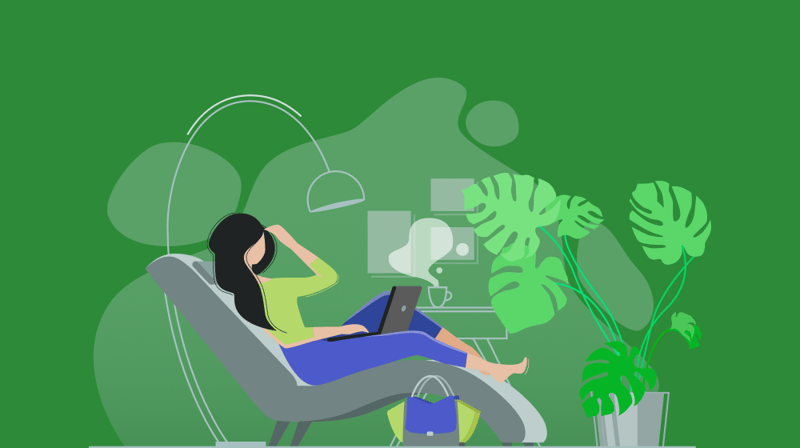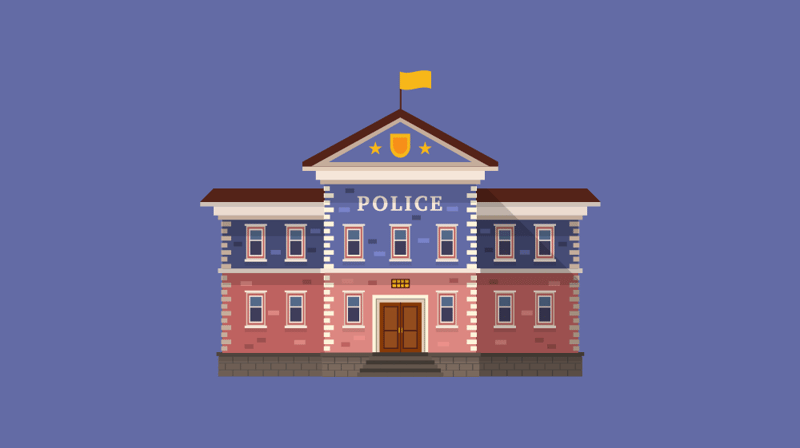Do you consider your workspace “cozy”?
Feeling comfortable within your work environment is crucial to your professional satisfaction and productivity. If you intentionally design an environment to be comfortable, it will likely also appeal to your students, colleagues, and other visitors.
The work that student affairs professionals do requires us to create safe spaces for students to learn and grow. Consider how you can intentionally create that space for yourself and others in your private office, cubical, or open office desk.
You may not be able to have visitors in your workspace if you are working from home or social distancing on campus. But you can still take advantage of this time to be more intentional with your workspace setup in preparation for welcoming visitors again. The process of decorating your office can also be relaxing in and of itself.
Here are some potential ways to design for comfort.
Fidget & Focus Toys
Psychologists and researchers have suggested that fidgeting can help relieve stress. One type of tool that is designed for destressing is the fidget toy. These gadgets can be anything that helps a person relax by focusing their attention on tactile (touch) stimulation.
Here are some ideas for fidget toys to include in your office:
- Fidget spinners and fidget cubes
- Stress balls (buy some or make them yourself)
- Tangle toys
- DIY sensory jars
- Budda Boards
- Adult coloring books
- Small items made with reversible sequins (such as this mini sequin pillow)
- Slinkies
- Thinking Putty
- Worry stones
- Kinetic sand and mini sandboxes (buy some or make it yourself)
Handheld puzzles can also be great relaxation tools. Rubix Cubes, Find It games, and 3D brain teasers are great for individual use.
You certainly don’t need to get every item mentioned above. Pick a few to start out with and curate your collection. If you don’t want to spend money on brand-name items, feel free to go with cheaper alternatives or make your own. For example, stress balls run the gamut of being made of cheap foam, physical therapy-grade gel, and DIY materials from a dollar store.
Don’t forget to get a container to hold all your fidget toys. A small metal or wooden basket works well with most decor.
Be sure to set some rules if you are going to let other people use your fidget toys. Consider whether you will let the toys leave your office space and if students or colleagues can access the items when you are not in the office.
Lighting
Fluorescent lighting is a standard lighting choice for most office spaces in the US because they are cheaper and more energy-efficient than incandescent bulbs.
However, research has shown that fluorescent lighting can have negative effects on employees’ health, often leading to headaches and eye strain.
To create a more comfortable environment, we first need to ask: why do humans prefer natural light (sunlight) to fluorescent lighting? Well, in short, sunlight has a warmer color temperature than fluorescent lighting. Color temperature is measured in kelvin; a light source that outputs lower kelvin is perceived as “warmer” and more relaxing. This is different from the brightness of a light source, which is measured in lumens.
Although you probably can’t control what types of lights your employer installs, there are still ways to simulate sunlight in your personal workspace.
During the winter, many people report feeling less happy. Studies have shown that this is partially due to reduced exposure to sunlight. Light therapy lamps can help. They simulate sunlight by emitting light that mimics the sun. This improves a user’s mood because our brains produce the same hormones that they would make outside on a sunny day.
The blue light that is emitted from your computer and mobile screens may also be contributing to headaches and eye strain. Blue light is a shorter wavelength than other colors on the visible spectrum of light, meaning that it produces higher amounts of energy and is more likely to irritate your eyes.
If you find yourself dealing with headaches and eye strain after a long day of staring at computers, it may be time to consider blue-light-blocking eyeglasses. These are not prescription glasses; their sole purpose is to block blue-spectrum light.
aromatherapy & wax melts
What smell instantly lightens your mood? Is it a natural smell, like pine or citrus, or maybe food, like freshly baked cookies?
Scents can contribute to an overall feeling of well-being. Theresa Molnar, the executive director of the Sense of Smell Institute, puts it this way:
“Scents can have positive effects on mood, stress reduction, sleep enhancement, self-confidence, and physical and cognitive performance.”
The good news is that if you can imagine a scent, there is probably a candle that smells like it.
But wait, aren’t candles considered a fire hazard in office spaces? That’s where wax melts come in! A wax melt is a block of wax infused with a scent, just like a candle. The difference is that you place a melt into a wax warmer, which heats it up to release the scent. Most wax melts last for a few heatings before the scent wears out.
A diffuser is another option. They work by heating up a mixture of water and essential oils that is then dispersed around the room using steam. Some common types of essential oils are peppermint, lavender, and jasmine.
Practicing aromatherapy can help reduce headaches and improve your overall mood, but don’t believe any health claims that aren’t backed up by research. I suggest reading these articles by Healthline and Verywell Health, both of which have been fact-checked by medical professionals.
plants
You don’t need to have a green thumb to enjoy office plants.
Research shows that bringing the outdoors inside offers multiple benefits.
- Plants filter the air around them, creating a healthier environment.
- The green color has a soothing effect that reduces stress and anxiety.
- Plants boost your creativity and productivity by stimulating your senses with their scents and pops of natural color.
- Large plants can serve as buffers between your space and nearby background noises.
- Plants can make your space feel more welcoming to guests.
To pick a plant that works for you, reflect upon your needs. Do you want a hardy plant that doesn’t require much sunlight and will be fine if you forget to water it? Would you prefer a big plant to put on the floor or a smaller one to place on your desk? Will it have colorful flowers and be more for decoration or would you like to maximize its ability to clean toxins from the air?
The plant experts of The Spruce and Florapedia have compiled some great suggestions for office plants.
Professionals balance the desire to personalize their workspace with the considerations they must give toward making their visitors comfortable. What is most important is that your workspace is designed in such a way to allow you to do your best work.
How have you made your office cozy? We’d love to know the details (or even see pictures)! Connect with us on Twitter @themoderncampus and @JustinTerlisner.





